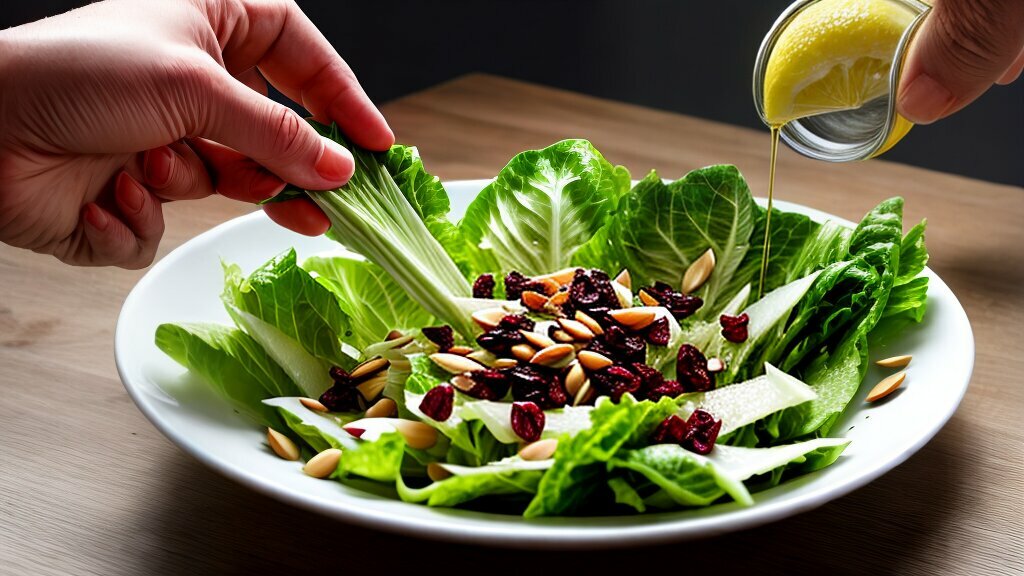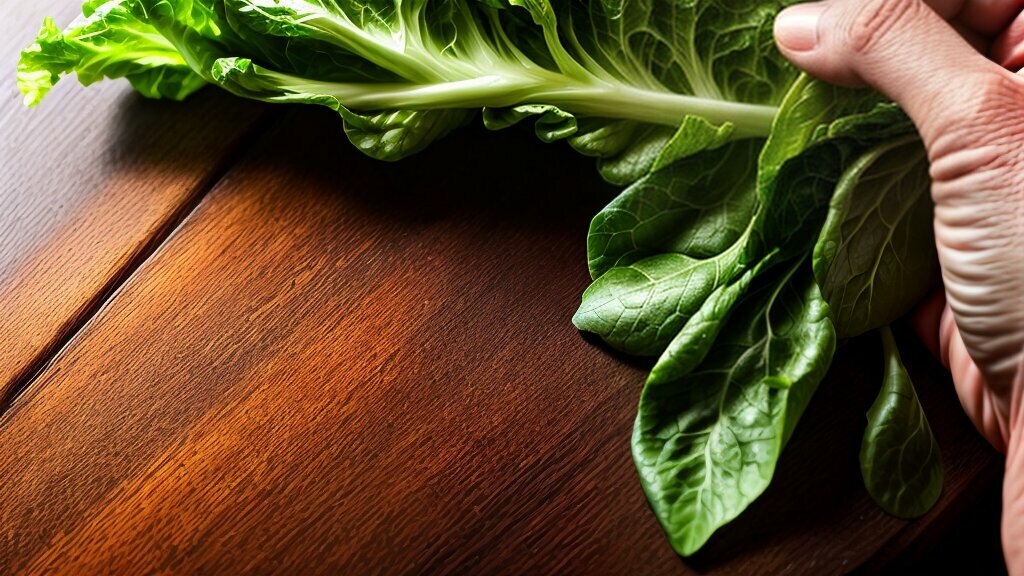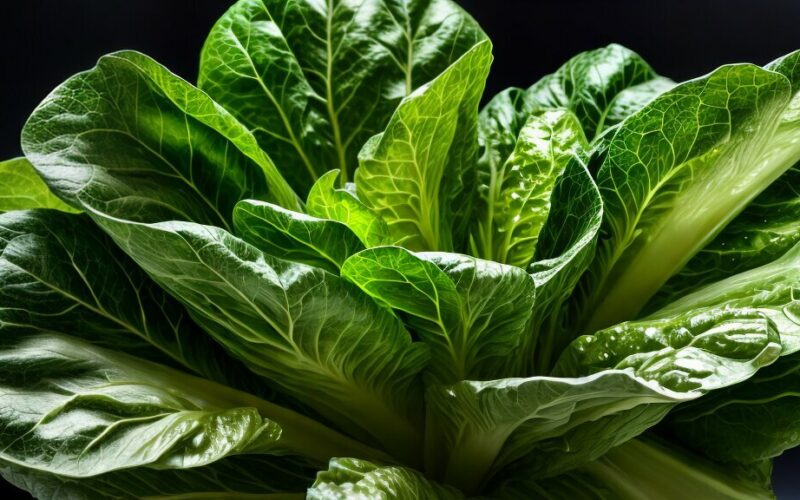Have you ever found yourself biting into a salad and thinking, “Why does this romaine lettuce taste so bitter?” While it may seem like a common occurrence, the truth is that romaine lettuce should not be inherently bitter. In this article, we will explore the flavor myths associated with romaine lettuce and provide tips to enhance your salad experience.
The perception of bitterness in romaine lettuce can be caused by several factors. For instance, the presence of certain minerals in the soil can affect the taste of the lettuce. Additionally, overexposure to sunlight and heat can cause the lettuce to become more bitter. However, it is important to note that while some batches may be naturally bitter, the majority of romaine lettuce should have a mild and slightly sweet taste.
In the next section, we will dive deeper into the flavor profile of romaine lettuce and explore why it can sometimes be perceived as bitter.
Key Takeaways:
- Romaine lettuce should not be inherently bitter
- The perception of bitterness can be caused by certain factors such as soil minerals and overexposure to sunlight and heat
- The majority of romaine lettuce has a mild and slightly sweet taste
Understanding Romaine Lettuce’s Flavor Profile
Have you ever bitten into a leaf of romaine lettuce and noticed a bitter taste? The bitterness of romaine lettuce is a common perception, but is it true? Understanding the flavor profile of romaine lettuce can help you determine whether your lettuce is actually bitter or if it’s just your taste buds playing tricks on you.
First, it’s important to note that the bitterness of romaine lettuce can vary depending on the season and where it’s grown. In general, romaine lettuce has a slightly bitter and nutty flavor. The bitterness comes from compounds called sesquiterpene lactones, which are natural plant compounds that protect the lettuce from insects and other pests.
The bitterness of romaine lettuce can also be affected by how it’s harvested and stored. Lettuce that is harvested in the morning tends to be less bitter than lettuce that is harvested later in the day. Storing lettuce in the refrigerator can also make it more bitter over time.
Another factor that can contribute to bitterness in romaine lettuce is overcooking. If you cook romaine lettuce for too long or at too high of a temperature, it can become bitter. It’s best to use romaine lettuce in raw salads or lightly cooked dishes to avoid bitterness.
Fun fact: Did you know that the heart of the romaine lettuce is less bitter than the outer leaves? If you’re sensitive to bitterness, you might want to remove the outer leaves and use the heart instead.
Identifying Bitterness in Romaine Lettuce
So how can you tell if your romaine lettuce is actually bitter? The easiest way is to taste it! If the lettuce has a strong, unpleasant bitterness, then it’s likely that it’s actually bitter. However, if the bitterness is mild or barely noticeable, it might just be your taste buds.
If you suspect that your romaine lettuce is bitter, you can also try smelling it. Bitter lettuce often has a slightly sour or musty smell. You can also check the color of the leaves. If the leaves are yellow or brown, they may be bitter and past their prime.
Now that you understand the flavor profile of romaine lettuce and how to identify bitterness, you can make more informed decisions when choosing and preparing your lettuce.
Tips for Reducing Bitterness in Romaine Lettuce
If you are someone who finds romaine lettuce bitter, don’t worry, there are ways to reduce its bitterness and enhance your salad experience. Here are some practical tips and techniques:
1. Soak Romaine Lettuce in Ice Water
To reduce the bitterness, try soaking the romaine lettuce in ice water for 30 minutes before you prepare your salad. This technique will help to crisp the leaves and remove any bitterness that they may have.
| Step By Step: | Fill a large bowl with cold water and add ice cubes. Place the romaine lettuce leaves in the water and let them soak for 30 minutes. Afterward, remove the leaves and pat them dry with a paper towel. Now, you can prepare your salad with the crisp, less bitter romaine lettuce leaves. |
|---|
2. Remove the Base of the Romaine Lettuce
Another way to reduce the bitterness of romaine lettuce is to remove the base of the lettuce. The base is the tough, white part at the bottom of the leaves, which can contribute to the bitterness of the lettuce.
| Step By Step: | Trim off the base of the lettuce using a sharp knife. Make a diagonal cut, removing the tough, white part. By removing the base, you’ll have less bitterness and more crunch in your salad. |
|---|
3. Add Sweet Ingredients to Your Salad
Sweet ingredients can help balance out the bitterness of romaine lettuce. Some ingredients that pair well with romaine lettuce include:
- Fruits such as apples, pears, or berries
- Nuts such as walnuts, almonds, or pecans
- Sweet vegetables such as roasted sweet potatoes or beets
- Sweet dressings such as honey mustard or balsamic vinaigrette
By adding sweet ingredients to your salad, you can create a more complex flavor profile, which will make the bitterness of romaine lettuce less noticeable.

By following these tips, you can reduce the bitterness of romaine lettuce and enjoy a delicious and nutritious salad. Don’t be afraid to experiment with different flavors and ingredients to create the perfect salad for your taste buds!
Enhancing the Flavor of Romaine Lettuce
While romaine lettuce has a slightly bitter taste, it can be enhanced with various flavor combinations to make your salad more enjoyable. Here are some creative tips to try:
1. Add sweetness: Balancing out the bitterness with sweetness can make a delicious difference. Try adding sliced strawberries, chopped apples, or raisins to your salad. The natural sweetness of these fruits will complement the bitterness of romaine lettuce.
2. Mix up your dressings: Experiment with different dressings to find ones that pair well with romaine lettuce. A balsamic vinaigrette, honey mustard, or even a simple olive oil and vinegar can bring out the best in your salad.
3. Incorporate crunchy toppings: Adding texture to your salad can make it more exciting to eat. Try adding crunchy toppings like croutons, nuts, or seeds to give your salad a satisfying crunch.
4. Spice it up: Adding spices and herbs can work wonders in enhancing the flavor of romaine lettuce. Try sprinkling some garlic powder, cumin, or cilantro onto your salad for an extra kick.
5. Pair with complementary flavors: If you’re looking for flavor combinations that work well with romaine lettuce, try pairing it with ingredients like grilled chicken, shrimp, feta cheese, or avocado. These ingredients will complement the bitterness and add a burst of flavor to your salad.

By trying out these creative tips, you can elevate the flavor of your romaine lettuce salad and enjoy the numerous nutritional benefits it provides.
Conclusion
Congratulations on making it to the end of this article! You now have a better understanding of romaine lettuce’s flavor profile and how to reduce its bitterness. By following the tips and techniques outlined in this article, you can enjoy a more enjoyable salad experience.
But Wait, There’s More!
Before we wrap up, it’s important to note that despite its slight bitterness, romaine lettuce is still a highly nutritious vegetable. It’s packed with vitamins and minerals that can promote overall health and well-being.
So, don’t let the bitterness scare you away. Instead, use it as an opportunity to experiment with new flavor combinations and enhance the taste of your salads. You never know, you might just discover a new favorite recipe!






